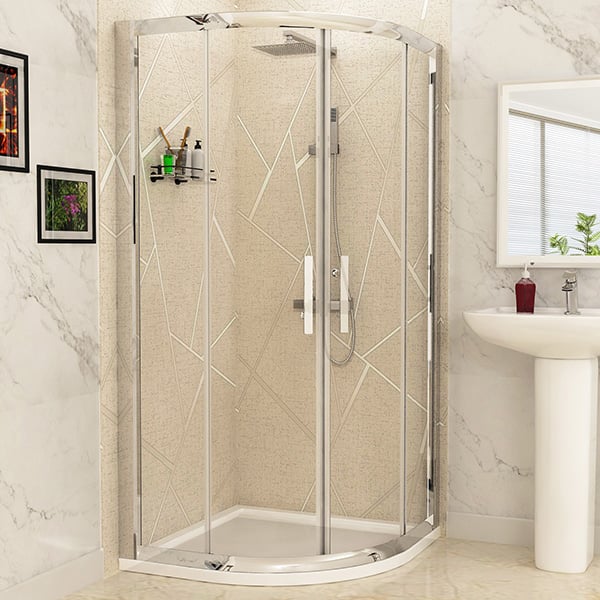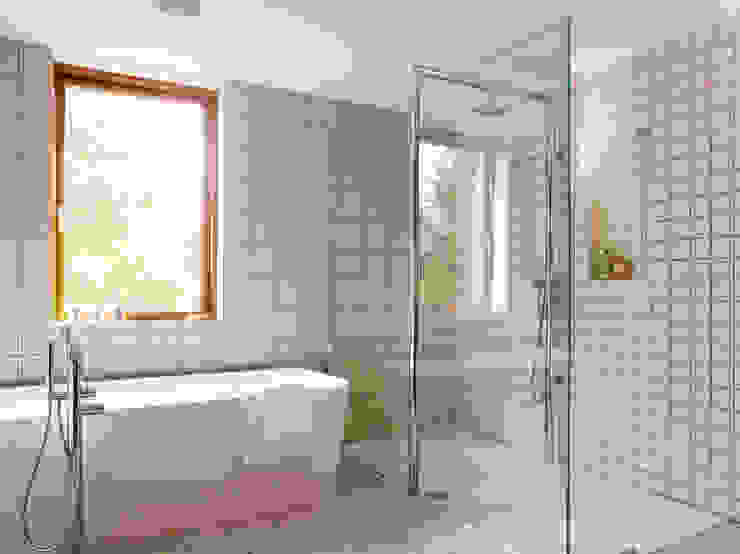The content which follows on the subject of How to Install a Shower Enclosure is indeed enlightening. Don't miss out on it.

An effective shower setup needs careful planning and a great deal of job. Most of the times, you will certainly need to do three types of jobs: mounting wall surfaces, mounting the plumbing, as well as completing walls.
Preparation
Firstly, you have to pick the kind of shower that you want to install. It is essential to ascertain whether the chosen shower can managing specific systems and can regulate a secure degree of water with the boiler. Most shower devices nowadays are made to be versatile to various water pressures (such as stored warm water as well as cold mains).
It is additionally crucial to consider the water pressure and also the planning of the piping and water drainage for the shower
Various Kinds Of Shower Units
- Push-on Mixer: The hose and also spray parts of the push-on mixer shower system can be connected to the bathroom tap as per your need, as well as the water temperature can be readjusted by means of the taps. Push-on mixers are cheap and also very easy to install. Nevertheless, although the pipe connection is straightforward, it is quickly dislodged. Additionally, it is inconvenient to readjust the temperature.
- Bath/Shower Mixer: The tube as well as spray of this type of shower are incorporated with a bath mixer faucet, as well as the temperature level can be changed through the bathroom taps. It is an extremely inexpensive choice and also no additional plumbing is involved. Nevertheless, the bath/shower mixers also deal with inconvenient temperature level control options.
- Manual Mixer: The tube and spray of a hand-operated mixer shower unit belong of the wall system as well as the hot and cold water materials are attached to a single shutoff The temperature and stress of the water are controlled with either one or a selection of knobs (in a lot more costly showers). Although temperature control is a lot easier in manual mixer types, they are extra expensive than the formerly stated mixers. They also need additional plumbing of hot and cold water system pipelines.
- Thermostatic Mixer: The hose as well as spray of this shower kind are a part of the wall system and also the hot and cold water materials are attached to a solitary valve right here also. It is complete with a built-in stabiliser to self-adjust the water temperature level and also to prevent it from ending up being also warm. One of the most significant benefits of a thermostatic mixer shower kind includes convenient temperature level control. Nonetheless, it is one of the most expensive of the different mixer choices.
- Power Shower: A power shower is a solitary device containing a powerful electric pump that can modifying both the water stress and temperature. This type of shower can be fitted if there is water system from a cold water tank and also a warm water cyndrical tube. A power shower makes the adjustment of both pressure and temperature simple. On the other hand, it disagrees for water heated up straight by the shower or where the water is provided by a mix central heating boiler under keys pressure.
- Electric Shower: An electric shower is plumbed into a mains cold water supply and it heats up the water electrically. It is essential to keep in mind that for this shower kind to be set up, the keys stress requires to be a minimum of 0.7 kg/sq centimeters (10lb/sq in). The system permits the temperature level and also stress to be readjusted by means of a handle. Versions with temperature level stabilisers are much better as they stay untouched by various other taps somewhere else being used within the home. A major disadvantage of electric showers is that the control knob only allows for the alternative of heats at much less stress, or reduced temperatures at a higher pressure. This is problematic in the winter season when the spray is often weak and also the keys water is chillier. Nevertheless, this problem is tackled in some models which are readily available with a winter/summer setup.
Technique
Depending upon the kind of shower you wish to install, the shower head have to either be suited order to prevent its contact with the water in the bath below or the base tray, or it has to have a check shutoff.
Prior to starting, it is advisable to note the placements of the shower head as well as control, and to intend the pipe-work included. Additionally, the water drainage system to eliminate the waste water will certainly require to be prepared. Both positions of the cable course as well as the shower switch will certainly additionally need to be considered if a rapid or electrical shower unit is being mounted.
Utilize the direction guide given with the shower system to fit the shower control.Before fitting the pipelines that will provide the water to the shower system, it is essential to remove the water system. In order to safeguard the pipelines, they must be offered a water resistant covering as well as likewise fitted with isolating shutoffs. The pipes can after that be buried into the wall surface and smudged over to neaten the general appearance.
Fit the base tray, shower head, as well as fittings.
Link the main shower control to the pipelines that will be providing the water (This might need a female screw string adapter).
Reconnect the water supply and also test the pipes for any type of leaks, as some might need tightening up.
If you are installing an electric shower, remember to turn off the electricity supply before making any kind of electrical links. Once these links have been made (there must be guidance within the user's manual), the power supply can be switched back on.
Changing Water Stress to Suit Your Shower
The cold water storage tank can be lifted to a higher elevation (occasionally as low as 150mm (6inches)) by installation a strong wooden assistance beneath it - potentially made up of struts as well as blockboards. If you pick this option, the primary and also distribution pipelines will certainly also need to be elevated to meet the brand-new elevation of the reservoir.
Additionally, a booster pump (a solitary pump or a dual/twin pump) can be fitted. Whichever type is selected, it needs to be connected right into the power supply in order to operate.
Piping as well as Water drainage
It is best to make use of 15mm diameter supply pipes, and also make the runs to the shower as short as well as straight as feasible so regarding maintain maximum stress and also minimise heat loss. Furthermore, by reducing the use of elbow joints for pipeline edges, you can lower the resistance in the flow of the supply of water. You can accomplish this by flexing the pipes instead.
Most Common Mistakes
- Violating or ignoring neighborhood code constraints.
- Making use of pipelines that are as well small.
- Attaching copper to galvanized without making use of a brass or dielectric suitable between the two.
- Not using tape or pipeline substance at threaded joints.
- Uneven your fixtures when installing them.
- Not mounting an air void filling up for fixtures.
- Cutting supply stub outs as well short to install the shutoff valves onto after the ended up wall surface remains in place.
- Not properly straightening tubes into fittings or quit shutoffs. (Requiring the nut onto the compression ring at an angle when the tubes goes to an angle will cause a leakage.).
- When turning the water back on in your home, constantly run the outdoors hose pipe valve or purge your bathrooms to bleed dust and air from the lines. This particles can trigger problems in your sink taps as well as other plumbing trim.
How Do You Install a Shower? Follow This Guide
Installing a Shower at a Glance
- Tools & Materials: Level, electric drill, caulk, hole saw, cedar shims, shower unit
- Step 1: Drill pilot holes
- Step 2: Prep fixture holes
- Step 3: Move unit into place
- Step 4: Caulk corners and base
- Step 5: Attach door
- Step 6: Install shower pan
Whenever plumbing is involved in a DIY project, people worry about what might go wrong. The truth is that installing a shower isn’t that complicated, and you can save a lot of money by doing it yourself. You shouldn’t need to make any alterations to your plumbing to complete the job, and most of the tools you need will be provided in your new shower kit.
Can I Install a Shower Myself?
Even if you’ve never installed a shower before, you’ll find this to be a project that is perfectly suited for DIYers with a moderate level of experience. Whether you're doing a bathtub conversion or installing a new stall, most of what you need comes in shower kits that you can purchase from a hardware store. The first thing you need to do is determine what type of shower stall you want.
Single-panel stalls are the easiest to install because they come preassembled. All you need to do is put them in place. Multi-panel showers require a few additional steps, but you’ve got more control over the appearance of your unit. Multi-panel units are also much easier to handle if you’re going to do the installation without any help.
Be sure to take all appropriate safety precautions, such as wearing eye protection and gloves. When you’re removing or installing a shower unit, you might kick up debris that could hurt your eyes. You’ll also need to work with equipment that will get extremely hot, so be sure to have safety gloves handy.
Tools and Materials
- 2- to 4-foot level
- Electric drill with a 1/8-inch drill bit
- Caulk
- 2-inch hole saw
- Cedar shims
- The unit itself
Before You Begin: Prep the Space
It’s highly important to measure your space accurately before putting the stall in. Measuring from the floor upward and from each corner outward will ensure you’ve got the right measurements. What you’re looking for is where the plumbing apparatuses are going to come through the stall. Transfer these measurements over to the back of your unit by drawing the locations of these holes using a pencil or marker.
Pull out your old shower and make sure to scrape off all the old caulking. Be thorough because you want to work with smooth surfaces for the best installation. Once you’ve pulled out your existing shower, you need to make sure that the floor is clean and dry. The best way to clean debris is with a shop vacuum, as it’ll soak up water and dirt together.
If you’re experiencing any plumbing issues, such as low water pressure, this is a perfect opportunity to solve them. Make sure that the pipes themselves are not in need of patching and clean your showerhead. When you turn the water back on after your project, check the pipes for signs of wear or disrepair. Anything beyond minor repairs should be handled by a plumber, and this is the best time to bring in a professional.
If the floor has any moisture at all, don’t proceed until it’s completely dry. The last thing you need is for the floor to rot or invite mold and mildew into your base. Once everything is dry, apply waterproof wallboard to the walls. This can be attached with screws or nails, then sealed with caulk so that water doesn’t seep into any crevices.

We are very interested in How to Install a Direct-to-Stud Shower Enclosure and I'm hoping you enjoyed our blog post. Sharing is nice. Helping people is fun. Thanks for taking the time to read it.
Booking
Comments on “Demystifying Shower Unit Installation - Everything You Need To Know”